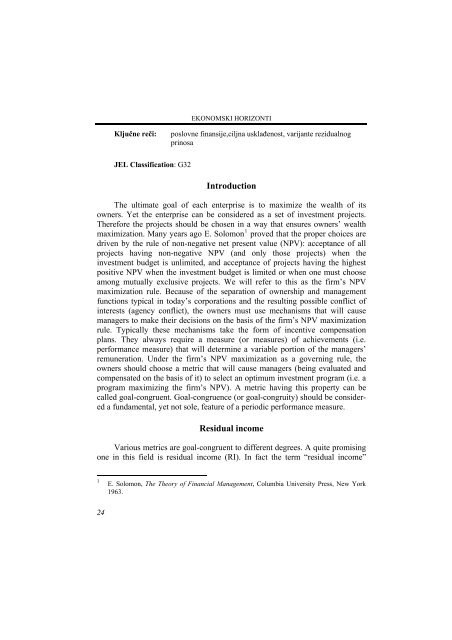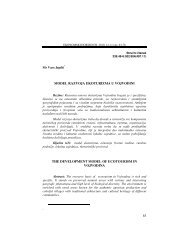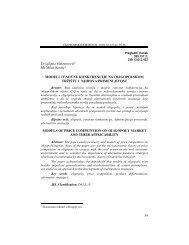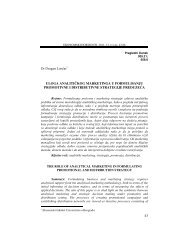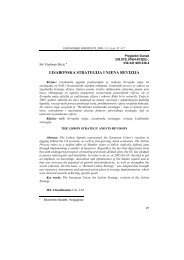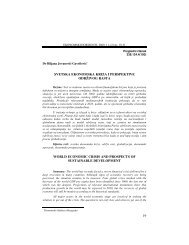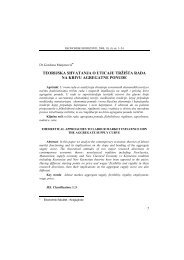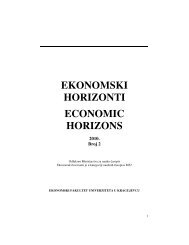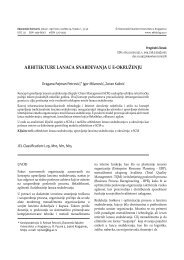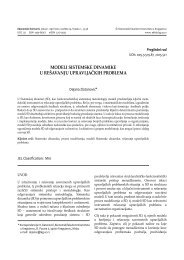EKONOMSKI HORIZONTI ECONOMIC HORIZONS 2008. Broj 1-2
EKONOMSKI HORIZONTI ECONOMIC HORIZONS 2008. Broj 1-2
EKONOMSKI HORIZONTI ECONOMIC HORIZONS 2008. Broj 1-2
You also want an ePaper? Increase the reach of your titles
YUMPU automatically turns print PDFs into web optimized ePapers that Google loves.
<strong>EKONOMSKI</strong> <strong>HORIZONTI</strong><br />
Ključne reči:<br />
poslovne finansije,ciljna usklađenost, varijante rezidualnog<br />
prinosa<br />
JEL Classification: G32<br />
Introduction<br />
The ultimate goal of each enterprise is to maximize the wealth of its<br />
owners. Yet the enterprise can be considered as a set of investment projects.<br />
Therefore the projects should be chosen in a way that ensures owners’ wealth<br />
maximization. Many years ago E. Solomon 1 proved that the proper choices are<br />
driven by the rule of non-negative net present value (NPV): acceptance of all<br />
projects having non-negative NPV (and only those projects) when the<br />
investment budget is unlimited, and acceptance of projects having the highest<br />
positive NPV when the investment budget is limited or when one must choose<br />
among mutually exclusive projects. We will refer to this as the firm’s NPV<br />
maximization rule. Because of the separation of ownership and management<br />
functions typical in today’s corporations and the resulting possible conflict of<br />
interests (agency conflict), the owners must use mechanisms that will cause<br />
managers to make their decisions on the basis of the firm’s NPV maximization<br />
rule. Typically these mechanisms take the form of incentive compensation<br />
plans. They always require a measure (or measures) of achievements (i.e.<br />
performance measure) that will determine a variable portion of the managers’<br />
remuneration. Under the firm’s NPV maximization as a governing rule, the<br />
owners should choose a metric that will cause managers (being evaluated and<br />
compensated on the basis of it) to select an optimum investment program (i.e. a<br />
program maximizing the firm’s NPV). A metric having this property can be<br />
called goal-congruent. Goal-congruence (or goal-congruity) should be considered<br />
a fundamental, yet not sole, feature of a periodic performance measure.<br />
Residual income<br />
Various metrics are goal-congruent to different degrees. A quite promising<br />
one in this field is residual income (RI). In fact the term “residual income”<br />
1<br />
E. Solomon, The Theory of Financial Management, Columbia University Press, New York<br />
1963.<br />
24


